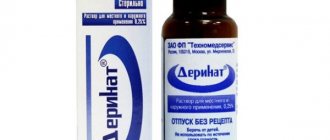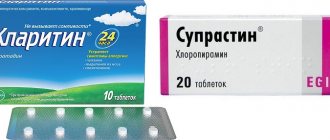Home — For the public
- Map of medical organizations
- Vaccination
- Clinical examination
- Fluorography
- Addresses and opening hours of clinics
- Emergency rooms
- Oncology
- Where to take an HIV test
- Healthy child's office
- Services
- Prevention of CVD
- Disease Prevention
- World Patient Safety Day
- Newspaper "Medical News"
- specialist
- School of Health
— All about vaccination
- Appeal to parents
- Opening hours for vaccination clinics in Yekaterinburg
- Opening hours of vaccination clinics in the Sverdlovsk region
- Vaccinations: I want to know everything
- Child vaccination
- Regional vaccination calendar for adults
— Vaccinations: I want to know everything — How does vaccination help build immunity?
Every second a person encounters hundreds of bacteria and viruses that can lead to one or another disease. In addition, atypical cells constantly appear in the body, the further proliferation of which becomes the cause of malignant formations. Immunity is a defense mechanism. It protects against bacteria, viruses, and recognizes foreign tumor cells.
The immune system is represented by organs such as: lymph nodes, spleen, thymus and special blood cells. It performs the following tasks:
- recognizes bacteria or viruses that have entered the body;
- begins the synthesis of antibody proteins;
- remembers the pathogen in order to “fight it back” in the future.
Blood elements play an important role in protection: phagocytes, T- and B-lymphocytes. Each group of cells does its own job.
Phagocytes are the first cells to appear at the site of infection. They capture, absorb and digest foreign agents. They cope only with fairly “weak” aggressors, whose visit takes place for a person without any symptoms.
Digesting “foreigners,” phagocytes release substances called cytokines, which attract more serious artillery to the focus—lymphocyte cells. There are 2 main groups of lymphocytes.
B lymphocytes synthesize 5 groups of immunoglobulin proteins. For protection against a specific infection, types M and G are important. Immunoglobulins are stored in the body and protect a person from repeated cases of the disease for a long time. Vaccination uses immune memory: a person is injected with antigens or weakened pathogens. If there is a second attack, the defense mechanism is activated immediately.
T-lymphocytes perform different tasks: one group helps B-lymphocytes synthesize antibodies, the second destroys diseased or atypical cells of the body itself, and the third strengthens or weakens the immune response.
What is active and passive immunity
A person can obtain antibodies in various ways. Antibodies enter the body passively through the placenta during pregnancy, with mother's milk after birth, or during emergency immunization with ready-made immunoglobulins. Such immunity is unstable and needs to be “renewed” quickly: antibodies protect only while they circulate in the bloodstream. They do not reproduce on their own.
Active immunity occurs after an infectious disease or vaccination, since entry into the body of the pathogen itself or its fragments triggers the formation of new colonies of B-lymphocytes. These cells quickly synthesize antibodies and protect the body. So a person either does not get sick or suffers the infection easily.
The duration of active protection depends on the type of pathogen, so a person can suffer some diseases only once, while others occur repeatedly. The same statement is true for vaccinations: some vaccines are administered 1-2 times throughout life (for example, measles, rubella vaccination), while others require revaccination after a certain period of time (for example, diphtheria, tetanus - every 10 years).
Every second a person comes into contact with millions of microorganisms invisible to our eyes, most of them are capable of causing various diseases.
To prevent their penetration into the body, there is a special defense mechanism - immunity. It protects not only from microbes, but also from everything foreign in general: parasites, viruses, foreign tissues, and even one’s own cells altered by the oncological process.
Aleksey Agafonov, Candidate of Medical Sciences, researcher at the Allergology Department of the Clinic of the Institute of Nutrition of the Russian Academy of Medical Sciences, talks about how immunity works.
At the forefront of defense
Since the skin and mucous membranes are in direct contact with the world around us, it is in them that the maximum protective forces are concentrated. Human skin is impermeable to most microbes, and it also produces bactericidal substances that kill harmful microorganisms.
Another protective factor is that the top layer of skin consists of dense horny scales, which are constantly renewed and exfoliated, taking with them microbes located on the surface.
Mucous membranes, such as those in the mouth or nose, are more delicate and can be easily damaged, making them more accessible to bacteria. But here, too, the body hedges its bets - human saliva and tears contain various protective substances that are harmful to uninvited guests.
An unpleasant surprise awaits them in the stomach in the form of destructive enzymes of gastric juice and hydrochloric acid. These are not the only non-specific protection factors, and all of them are imperfect and do not provide 100% protection.
Heavy artillery
If harmful microbes still manage to break into the body, the immune system comes into play. Its representatives are found in every corner of the body.
There are organs of the immune system - the spleen, thymus, lymph nodes. And there are also special cells that move freely along with the blood throughout the body - phagocytes and lymphocytes.
In war - like in war
The first to meet the aggressor are phagocytes. Some of them end up at the site of the invasion, where they capture, absorb and digest the invading aliens. The rest play the role of a filter: they capture harmful microorganisms and particles, neutralize them and remove them from the body.
Phagocytes are able to cope with the microbe on their own if it is not too strong. In this case, the uninvited visit is asymptomatic and unnoticed by the owner.
However, when killing and digesting the aggressor, phagocytes release special substances - cytokines, which work as a signaling system in the body. Cytokines induce lymphocytes, and they then find specific measures to combat an overly aggressive invader.
Lymphocytes are divided into two categories: B lymphocytes and T lymphocytes . The first produce antibodies - immunoglobulins that kill microbes. They can remain in the body for many years and protect it from repeated attacks.
This ability of the body to remember invaders is how vaccination works: a person is injected with weakened infectious agents, and B cells produce antibodies to destroy them, which will be immediately activated when an active and viable infection occurs.
T lymphocytes, which are more common in the body, perform different functions. Some help B lymphocytes produce antibodies. Others strengthen or weaken, if necessary, the strength of the immune response to infection. And still others work as “cleaners” - they destroy damaged or improperly developing cells of their own body.
If for some reason the normal function of T-lymphocytes is disrupted, allergic processes, immunodeficiency conditions or tumors can form in the body.
Where does human immunity come from?
The child begins to receive the very first antibodies to various infections while still inside the mother - through the placenta. After birth, antibodies come through breast milk. This type of immunity is called natural passive immunity .
Natural active immunity is one’s own merit and experience gained during life in the fight against hostile invaders. This is the same reserve of antibodies produced by B lymphocytes.
Artificial immunity is formed through vaccinations and inoculations . Passive artificial immunity - as a result of the introduction of ready-made antibodies into the body. And active is the result of the immune system fighting a weakened microorganism from the vaccine.
Vaccines and vaccine-preventable diseases
There are a huge number of viruses and bacteria dangerous to humans in the world. Thanks to vaccination, some diseases (for example, smallpox) were defeated. Other infections are under control - pathogens circulate in the environment, but outbreaks and epidemics rarely occur.
Unfortunately, infections cannot be prevented with proper nutrition, hardening, etc. Vaccination is the only way to protect children and adults from the disease.
The following are common vaccine-preventable diseases:
- Tuberculosis. It affects the lungs and bronchi, less commonly the joints and the genitourinary system. Dangerous due to the development of generalized forms, meningitis. Mycobacterium tuberculosis is extremely resistant to most drugs.
- Whooping cough is a disease that affects the respiratory tract. The toxins of the pathogen irritate the cough center, provoking attacks of painful coughing with respiratory arrest and vomiting. May be complicated by brain damage or episyndrome.
- Diphtheria is a disease in which toxins from the pathogen circulate in the blood, having a detrimental effect on the cardiovascular and nervous system. More often, patients develop croup - a dense film on the tonsils that blocks the lumen of the respiratory tract. Complications include shock, paralysis of the soft palate, damage to the heart and kidneys.
- Poliomyelitis is an acute intestinal infection that affects the central nervous system. Breathing is impaired, paresis and paralysis develop. The changes are permanent; more than 80% of those who have recovered from the disease remain disabled. It is almost impossible to cure this disease.
- Measles is an extremely contagious viral disease. It affects the respiratory tract with the development of bronchitis, false croup, and pneumonia. The central nervous system often suffers - meningitis, encephalitis. Deafness may develop. There is no specific treatment for measles, and the mortality rate among unvaccinated children is high.
- Rubella is a viral infection characterized by skin rash, swollen lymph nodes, and fever. It is most dangerous for expectant mothers - infection leads to severe developmental defects (heart defects, deafness).
- Tetanus is an infectious disease in which bacterial toxins have a toxic effect on the nervous system. Death occurs from respiratory paralysis, sepsis, myocardial infarction. Mortality is high. The entry gate is damaged skin (wounds, abrasions, etc.) - this means that anyone can accidentally become infected.
- Mumps (“mumps”) is an inflammation of the parotid salivary glands. Children get sick more often; can be severe - every tenth person develops meningitis, and hearing loss is possible. Boys who have had mumps often experience inflammation of the testicle, which leads to impaired fertility.
- Viral hepatitis B spreads through sexual contact, household contact, medical procedures, and the placenta. The disease in 60-90% is chronic and leads to cirrhosis or primary liver cancer.
Immune diseases
1. Immunodeficiencies. They are characterized by the absence of one or several components of the body’s immunity, or a disruption in the interaction of various immune organs, resulting in a sharp weakening of the immune response. Immunodeficiencies are primary and secondary. — Primary immunodeficiencies arise as a result of congenital (hereditary) defects of the IS. — Secondary immunodeficiencies arise during the formation of IS. In case of immunodeficiencies, the use of immunosuppressive drugs is strictly prohibited; immunostimulants are used. 2. Autoimmune diseases. It is characterized by the production of autoimmune antibodies by the body’s immune system against healthy cells and tissues of its own body, which leads to their destruction and the development of autoimmune inflammation. This occurs, as a rule, as a result of the loss of the ability of the IS to identify foreign agents. Immunosuppressants are used to treat autoimmune diseases; the use of immunostimulants is prohibited.
Important information about vaccination
When thinking about whether to vaccinate themselves or their children, adults worry about the safety of the drugs, are interested in possible contraindications, and believe that the national calendar is “overloaded.”
How safe are vaccines? Vaccines usually contain the following components:
- Antigen. This can be a live, killed form of a virus, bacteria or fragments of a pathogen. This component “teaches” the immune system to recognize the enemy and produce antibodies against it.
- Preservatives and stabilizers to protect antigens during transportation or storage. There are vaccines without preservatives; they are used in pediatric practice.
- Some drugs contain adjuvant substances that enhance the immune response.
Each vaccine goes through several stages of clinical research: safety, metabolism, methods of elimination, frequency and severity of undesirable effects are studied. Next, immunogenicity is assessed - the ability to stimulate the synthesis of antibodies in response to administration. This parameter indicates the effectiveness of the drug and is estimated as a percentage. For example, when a flu vaccine is administered, antibodies are produced in 95% of those vaccinated. The higher the immunogenicity, the greater the likelihood that the population will be protected from an epidemic of the disease.
A safe and effective vaccine can be allowed into mass production and recommended for use. After drug approval, clinicians continue to monitor for adverse effects.
Popular hypotheses about the connection between vaccinations and diseases such as autism, cerebral palsy, and epilepsy have no scientific confirmation. Often, severe mental and neurological disorders first manifest themselves after 1 year of age, regardless of whether the baby has been vaccinated or not.
Civil war is raging...
Unfortunately, no war is complete without civilian casualties. Long and intense defense can come at a cost to the body if aggressive, highly specialized troops get out of control. Damage to the body's own organs and tissues by the immune system is called an autoimmune process [3]. About 5% of humanity suffers from diseases of this type.
The selection of T lymphocytes in the thymus, as well as the removal of autoreactive cells in the periphery (central and peripheral immunological tolerance), which we discussed earlier, cannot completely rid the body of autoreactive T lymphocytes. As for B lymphocytes, the question of how strictly their selection is carried out still remains open. Therefore, in the body of every person there are necessarily many autoreactive lymphocytes, which, in the event of an autoimmune reaction, can damage their own organs and tissues in accordance with their specificity.
Both T and B cells may be responsible for autoimmune lesions in the body. The former directly kill innocent cells carrying the corresponding antigen, and also help autoreactive B cells in the production of antibodies. T-cell autoimmunity has been well studied in rheumatoid arthritis, type 1 diabetes, multiple sclerosis and many other diseases.
B lymphocytes act much more sophisticatedly. First, autoantibodies can cause cell death by activating the complement system on their surface or attracting macrophages. Secondly, receptors on the cell surface can become targets for antibodies. When such an antibody binds to a receptor, it can either be blocked or activated without an actual hormonal signal. This happens in Graves' disease: B lymphocytes produce antibodies against the TSH (thyroid-stimulating hormone) receptor, mimicking the effect of the hormone and, accordingly, increasing the production of thyroid hormones [14]. In myasthenia gravis, antibodies against the acetylcholine receptor block its action, which leads to impaired neuromuscular conduction. Thirdly, autoantibodies, together with soluble antigens, can form immune complexes that settle in various organs and tissues (for example, in the renal glomeruli, joints, on the vascular endothelium), disrupting their function and causing inflammatory processes.
Typically, an autoimmune disease occurs suddenly, and it is impossible to determine exactly what caused it. It is believed that almost any stressful situation can serve as a trigger, be it an infection, injury or hypothermia. A significant contribution to the likelihood of an autoimmune disease is made by both a person’s lifestyle and genetic predisposition - the presence of a certain variant of a gene.
Predisposition to a particular autoimmune disease is often associated with certain alleles of MHC genes, which we have already talked about a lot. Thus, the presence of the HLA-B27 allele can serve as a marker of predisposition to the development of ankylosing spondylitis, juvenile rheumatoid arthritis, psoriatic arthritis and other diseases. Interestingly, the presence of the same HLA-B27 in the genome correlates with effective protection against viruses: for example, carriers of this allele have a reduced chance of contracting HIV or hepatitis C [15], [16]. This is another reminder that the more aggressively an army fights, the more likely civilian casualties are.
In addition, the development of the disease may be influenced by the level of autoantigen expression in the thymus. For example, insulin production and thus the frequency of presentation of its antigens to T cells varies from person to person. The higher it is, the lower the risk of developing type 1 diabetes, as it removes insulin-specific T lymphocytes.
All autoimmune diseases can be divided into organ-specific and systemic. In organ-specific diseases, individual organs or tissues are affected. For example, in multiple sclerosis - the myelin sheath of neurons, in rheumatoid arthritis - joints, and in type 1 diabetes - the islets of Langerhans in the pancreas. Systemic autoimmune diseases are characterized by damage to many organs and tissues. Such diseases include, for example, systemic lupus erythematosus and primary Sjogren's syndrome, which affect connective tissue. These diseases will be discussed in more detail in other articles of the special project.
Can multiple vaccines be administered at the same time?
Mothers of infants worry that vaccinations “kill” their own immunity and can cause harm if administered simultaneously. In reality, every person encounters tens and hundreds of bacteria and viruses every day, and his immune system successfully copes with them.
Two-, three-, four-, and five-component vaccines are well tolerated by children and help develop immunity by the time the kids attend preschool institutions, clubs or sections. You can get complete information about the procedure for administering drugs from your pediatrician.
Immunity and Transfer Factor
In 1949, transfer factor immune particles of an informational nature were discovered, which turned out to be carriers of the body’s immune memory. They “record” his entire immune experience (the result of the body’s struggle with all the foreign agents it had to encounter) and “store” this information. When the body encounters these antigens again, transfer factors “get” the necessary information about this antigen, and the immune system, using this information, neutralizes the foreign element - this is how immunity . Scientists have found that transfer factors are the same in all vertebrates and by transferring these immune particles from one organism to another, it is also possible to transfer the entire immune experience of the donor organism. Not so long ago, scientists managed to isolate transfer factor particles and on their basis create a unique immunomodulator Transfer factor - the best remedy, which has no analogues in the world today, for correcting immunity. This drug, when entering the body, performs the following functions: - increases immunity by restoring damaged DNA; — enhances the healing effect of medications and at the same time neutralizes their negative effects; - “remembers” all the information about the pathogens that the body encounters and the methods of combating them, and when they invade again, it provides all the information about them to the immune system, which neutralizes these pathogens. At the moment, there is no more effective immunomodulator in the world, and this has been proven not only by clinical trials, but also by the results received by all those who use this drug. Therefore, if you think about your health, about your immunity, purchase Transfer Factor. This drug should be in every home.
When should you refrain from vaccination?
Some people should delay vaccination or avoid it entirely. Temporary contraindications include:
- treatment of cancer (course of chemotherapy);
- decompensation of severe chronic diseases;
- acute infectious diseases;
- pregnancy and breastfeeding (but not all vaccines, for example against influenza, can be vaccinated in the 2-3 trimester of pregnancy);
- period less than 1 month from the last vaccination.
But there are also conditions in which vaccination can cause harm to health. This:
- autoimmune diseases;
- epilepsy, convulsive syndrome;
- allergy to vaccine components;
- poor tolerability of the previous dose of the vaccine.
Before administering the drug, the doctor examines the patient, measures body temperature, and collects an epidemiological history.
What is artificial immunity?
Artificial immunity is an immune defense that is formed under the influence of artificial stimulation.
To form it, certain vaccines or serums are introduced into the body.
They often take years or even decades to create. And some have been used unchanged since their creation (for example, anti-tetanus serum, the creation of which made it possible to stop the terrible tetanus pandemic forever). They contain ready-made immune particles that resist a specific type of antigen
.
It is important to understand that the created protection forms a barrier that functions for 2-3 weeks. Antibodies have a short lifespan, but in a fairly short time they create excellent resistance of the whole organism
.
Their production begins immediately after the infectious agent enters the body. In this case, an increase in body temperature is observed, the sick person feels weakness, fatigue and general malaise. As soon as the foreign microorganism is destroyed, lymphocytes read its data and, when encountered again, begin to produce antibodies.
To form passive artificial immunity, a person can be injected with antiserum - a suspension of antibody particles from the blood of homogenized pets. The same principle applies after a snake bite, when the victim is injected with a certain amount of poison, which acts as an antidote.
The vast majority of vaccinations are carried out before the child goes to kindergarten and school
.
During schooling, revaccination is carried out, which is necessary to consolidate the results obtained. The immunization schedule contains a number of rules and deadlines regulating the correct vaccination of the population. In addition, the country's legislation provides for a special vaccination calendar for children and adolescents.
Failure to comply will result in parents being held accountable. The administration of serums is used at a high risk of developing a certain disease, also in the early stages of its development to help the body on the path to recovery.
Is it possible to get vaccinated during pregnancy?
Pregnancy in itself is not a contraindication for vaccination. A distinction should be made between routine and emergency vaccinations.
Seasonal influenza vaccination is routinely recommended. So the flu vaccine is not only allowed, but also recommended. It reduces the likelihood of a baby getting sick in the first six months of life by 60-65%.
In an emergency, therapeutic and prophylactic vaccination against rabies is possible in case of animal bites. The doctor weighs the dangers of vaccination against the risk of developing a deadly disease.
Vaccination is the most effective and safe way to protect adults and children from dangerous infections. The list of recommended vaccines is indicated in the National Vaccination Calendar. You can find out more information about the procedure for administration, rules for preparing for vaccination and possible undesirable effects from your doctor.











